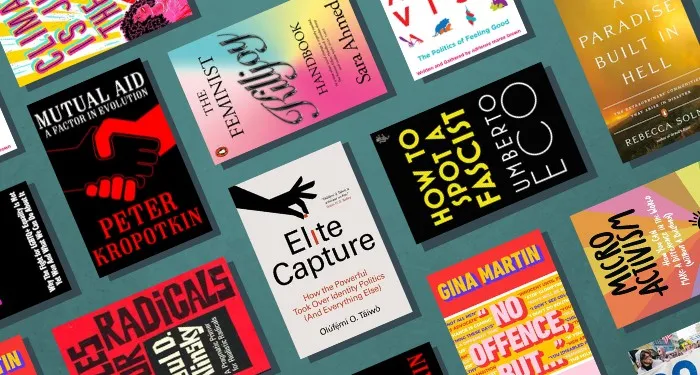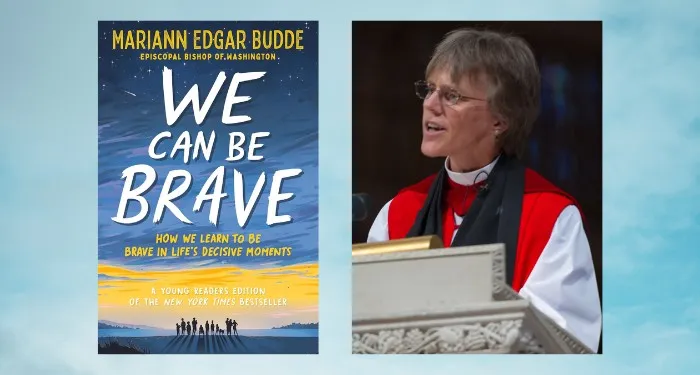Readers may guess that a book entitled Art in a State of Siege has something to say to our current international predicament. They will be right. Joseph Leo Koerner is probing what art becomes once politics are stripped down to relations of force—when, as in 2025, executive authority and the bully’s fist look nearly identical. We often like to think that art humanizes—that by contemplating made things we learn to better acknowledge one another, and that wonders of imaginative invention engender mutual goodwill. But need this be so?
Koerner, the author since 1990 of several acclaimed studies of Northern European art and the chair of more than one Harvard department, is centrally placed within the field we call the humanities. His instinct here, however, is to pace the contested boundaries of that comfort zone. He peers at the besiegers beyond—the might-is-right-wingers for whom appeals to goodwill are mere operational expediencies. He wonders how works of art might resist them or, alternately, serve them as weaponry. He asks whether artists might turn fifth columnists, internalizing the crises imposed on them. Art in a State of Siege is a compulsive expression of unease, delivered magisterially and at an opportune moment.
The three artists on whom Koerner dwells in his highly wrought text—which was long in gestation before the advent of the forty-seventh presidency—occupy disparate historical worlds. He returns to Hieronymus Bosch, the subject of a 2016 book in which he paired and contrasted that astonishing innovator, working at the turn of the sixteenth century, with Pieter Bruegel, working some sixty years later.* He crosses campus to Harvard’s Busch-Reisinger Museum and ponders its most formidable holding, Self-Portrait in Tuxedo (1927) by Max Beckmann. Then, flying to Johannesburg, the renowned art historian hooks up with the yet more celebrated artist William Kentridge. Koerner’s salute to the achievements of this inspiring contemporary becomes warmly bromantic.
The figure looming over the text, however, is not an artist but a political theorist. Koerner, a Jew with liberal sympathies, turns his attention to Carl Schmitt, a legal scholar who not only set out a case for Nazi power but was proactively antisemitic. During the Weimar Republic he started bringing out his tracts about authority and the state; a major paper, “The Concept of the Political” (1927), gained new racist implications when it appeared in book form shortly before Hitler brought an end to that phase of German history. Schmitt declared himself keen to assist with the purging of Jewish influence from the Third Reich.
Its leaders, however, were suspicious of intellectuals and soon sidelined this would-be recruit. Schmitt’s relegation to academia surely helped in part to save him when in 1947 he was brought before the International Military Tribunal in Nuremberg. He walked free and lived on, continuing to publish until his death in 1985. Evidently charisma also helped with his exoneration. “In interrogating Schmitt,” Koerner writes, “Kempner [the acting counsel at Nuremberg] seemed more interested in hearing the brilliant jurist’s arguments than in prosecuting him for his involvement in the Nazi regime.” I think it is fair to say that Koerner, who repeatedly returns to those arguments, is likewise mesmerized.
The aspects of Schmitt’s thinking that concern Koerner could be summarized abstractly, without reference to ethnicity. Insofar as humans are “political animals” (in Aristotle’s phrase), for Schmitt it is their nature to contend, will against will: “The entire life of a human being is a struggle.” Given that each has interests, each will have enemies. “In order to preserve one’s own form of existence,” each must identify who those enemies are and combat them. At the same time, it is the nature of humans to live together, and so we concur on systems of arbitration. Once these had been theological: God was our sovereign. More recently we settled for secularized constitutions and for the supposed supremacy of law. The latter, however, is a deceptive mask, liable to slip, for in any political entity there will always be some deciding agent—the one who can draw on the most brute force and who is thus in a position to declare a state of emergency, an “exception” that overrules the law. “Sovereign is he who decides on the exception,” in Schmitt’s formulation. In recognizing that authority requires this backstop, and in determining who the enemy is to be, we realign with reality and dispense with the fictions of liberalism.
Schmitt set out his case at a time when, following Germany’s defeat in World War I, insecure governments were repeatedly falling back on states of emergency to contain the nation’s tensions. The authoritarian regime that took power in 1933 soon moved to a permanent state of exception, suspending the laws that had upheld the “false neutrality” of the “Weimar system.” Koerner notes how Beckmann’s Self-Portrait in Tuxedo had one salient aspect before that juncture and another after. Here was a forty-three-year-old of commanding gifts and self-belief, forging an art that responded to Germany’s postwar traumas with a fractured yet densely impacted brushwork. The specific intent of that canvas—an imperious, full-frontal challenge to the viewer—is indicated in a manifesto Beckmann simultaneously published, which claims that the artist “is at once shaper and vessel. His work within the state is of fundamental significance because it is from him alone that the law of a new culture can emanate.” Beckmann, in other words, was himself taking on the role of sovereign, for want in 1927 of a viable alternative. With “Entartete Kunst,” the notorious exhibition the Nazis organized ten years later, that claim was upended. Paintings by Beckmann and many others of his generation were displayed for public ridicule. The enemy had been identified, and here was its face: “Degenerate art.”
Beckmann sidestepped. He fled Germany for Amsterdam, and a year later his phantasmagoric canvas Death brandished an oblique resistance: a border guard’s view of how this life abuts the next that is gritty, sardonic, absurd, and at the same time exuberant. For Kentridge, the painting proved a touchstone image, with its presentation of “the world as a contested arena.” In effect, claims Koerner, “Death gave Kentridge his picture of what he in 1986 termed ‘art in a state of siege,’ the term this book struggles to explore.” Here, then, is where the writer took his cue. Broadly, his text aligns “state of siege” with the “exception” of Schmitt’s political thinking. The literal besieging of a town may be an exceptional event, yet it is paradigmatic: it exposes in full nakedness the power one body of people may have to inflict violence upon another, unshrouded by peaceable living arrangements. Kentridge had reached for the phrase as South Africa’s apartheid regime, beset by adversaries both internal and external, declared a state of emergency that licensed mass arrests. The thirty-one-year-old white artist felt obliged to acknowledge the crisis because, as Koerner explains, public affairs had long been the “family business”: his father, Sydney, was a defense lawyer who had represented not only Nelson Mandela at his treason trial, which lasted from 1956 to 1961, but also the family of Steve Biko during the inquest into his death in 1977 at the hands of the police.
Kentridge departed from paternal precedent to strike out into graphics and theater, and Koerner writes that from his career’s outset he faced the contrast “between law and art as alternative vehicles for dissent, the former based on argument, the latter on ambiguity.” Kentridge’s distinctive format became stop-frame animations of evolving charcoal drawings, with occasional terse captions punctuating the imagery of rapacious property men, of a ravaged veld through which “the homeless oppressed ceaselessly march,” of thwarted romantic yearnings and suppressed judicial murders. Inviting viewers to read their own story lines into the work, Kentridge also invited them, not least through the grunginess of his black ash, to fall in with his own history-heavy onward march, resilient but not innocent. In state-of-emergency South Africa, he wrote, the compromises might be “more grotesque” than in other places, but they exemplified pervasive political tendencies: “It is always the peasants who pay; purity is a chimaera.” Koerner is therefore discussing an art practice that was formed under “siege” conditions and has continued to extrapolate from them, even long after the end of the apartheid regime—a practice that takes the Schmittian exception to be the rule.
Kentridge’s resilience is bound up, in his own words, with “the necessary stupidity that is essential in the studio.” His art is as often ridiculous as it is rueful. Why go to that studio if not to give yourself over to wordless fun? Koerner has his way of acknowledging this: “Making an image evades arguments that cannot be won in politics or in court.” I note though that as a wordsmith, Koerner opts for the verb “evades” rather than, say, “transcends.” His account of the artist’s oeuvre is illuminating, uncovering biographical sources for some of its themes. At the same time, it has a professional bias: its Kentridge is less the visual storyteller who makes me guffaw or want to weep than the genial patrician who, like Koerner, can mount rostra and captivate audiences with ingeniously sequenced trains of erudite reflection.
Art in a State of Siege—which began in 2016 as a lecture series—is an ostentatious performance of research: its discussion of Kentridge introduces us, for instance, to the etymological reasoning of Charisius, “a fourth-century Latin grammarian,” to the earliest appearance of watermarks “in Italian paper in the late thirteenth century,” and to Brassaï’s use of the “Voigtländer Bergheil with the Heliar f/4.5 lens” for his 1930s photography. The fact-flashing, combined with a gift for springy antitheses, makes every page at the least arresting; yet equally you are driven to read on, for Koerner’s project has clear seriousness of purpose.
The crisis that arises when naked power shows its face—the “siege”—is met by Kentridge with deflections, in an art that reasserts goodwill. But artists, Koerner claims, might also respond conversely: they could weaponize their work, making enmity their own agenda. Recasting studies that he has already “grappled with for decades,” he declares that “siege is the occasion, theme, and aesthetic ground of Bosch’s art.” For a new handle on the Netherlander’s Garden of Earthly Delights—“perhaps the most elusive painting ever painted”—he turns to exchanges between Schmitt and his writer friends Wilhelm Fraenger and Ernst Jünger before and after the Nazis’ defeat. (An account of Jünger, stationed with the Wehrmacht on the eastern front in the Caucasus, looking down into a ravine as troops manhandle prisoners and comparing the scene to a Boschian Hell, lends Koerner’s tour of extreme situations the most haunting of its passages.)
Koerner also explores the desire to obtain the triptych that possessed the Duke of Alba, whose tyranny tore apart the Netherlands half a century after Bosch’s death in 1516. The book’s titular theme, Koerner declares, allows for these leaps in time because it covers not simply the making of art under siege conditions but the “perspective” on art that arises whenever such conditions occur. Nonetheless, turning to what primary evidence there is, he does his best to determine what led an evidently pious and well-respected Dutch burgher to depict the Garden’s surfeit of bare pale bodies cavorting in a lime-green park capped by pink futuristic pavilions.
The intent, Koerner reckons, was to deliver an allegory of lust in such a manner that the viewer was lured into complicity with that sin, to his own humiliation. The painting thereby becomes an enemy of the viewer. He expands this interpretation to cover the entire Bosch corpus and its reception history:
The devil’s hatred of people, people’s hatred of other people, the Jews’ hatred of Christ and Christians, the hatred of Christians for their enemies, the hatred directed towards an “us” by an invisible “them,” and the wrath of God that consumes just about everyone: this global economy of loathing stands not just portrayed in Bosch’s pictures. It is performed in them, as if his brush were enmity’s instrument. Hatred contaminates. The aversion these images depict and enact defiles how we react to them. Uncertain whether they are for us or against us, we turn against each other. Bosch built his masterpiece to act like a time bomb set to detonate in every dangerous here and now.
This is swaggering, adrenaline prose. Its assertions seem to me to fail the test of experience. Not defilement but diversion: to these eyes, that is what The Garden of Earthly Delights supplies. Its high, zinging hues go with its hilarity—the amorous sow in a wimple cozying up to one of its males, the flowers sticking out of another man’s bottom. Its crammed market stall of shape-shuffling caprices (ovoids, tunnels, shells, spikes, and soft flesh, vessels continually recombinant) offers a holiday from truth and necessity, one that allows us, in common with its earliest recorded viewer—writing a year after the painter had died—to revel without shame in “things so pleasing and so fantastic.”
There was a sober Bosch—the Jesus who looks out from The Crowning with Thorns (circa 1510) is a commanding image of integrity—and just possibly his intentions may have corresponded to those that Koerner, after long research, imputes to him. But with a pen or brush in hand, Bosch was apt to get gloriously—and communicatively—drunk on his own inventiveness. Koerner refuses to fall in with this “necessary stupidity” of the studio, despite Kentridge. While he understands well enough how pictures are made, he mistrusts the resulting surfaces, believing that “concealment affects everything in Bosch’s art” and insisting that they are “dangerous” and “poisonous.” We reach the reductio ad absurdum of Koerner’s meaning-hunting, iconographical paranoia when, suspecting that the Garden’s pink pavilions help lay the trap it is springing on the viewer, he mutters, “The tips of those distant towers only look aligned.” (His italics.) But those towers belong in a painting, and nowhere else! “Only looking” is the condition to which they are bound!
I have been trying to summarize some thoughts that inform Koerner’s ever-stimulating and often provoking discussion. Could those thoughts be described as an “argument”? I would say not. This text is propped up by insistent invocations at every turn of “siege,” the cue that Koerner first took from Kentridge. The term is rummaged for usages that are literal: lurid “urbicides” ranging from that of Jerusalem in Deuteronomy to that of Sancerre in 1572 (in both of which the besieged were driven to cannibalism) and extending to beleaguered populations of the present. Koerner mentions in passing the Hopi of Arizona, the threat to whom “continues today.”
The term is also plumbed for its metaphorical possibilities. Insofar as adultery “breaches boundaries,” it aligns with siege; as every observer is surrounded by an outside world, the very act of beholding might likewise be deemed a state of siege. Art before the Protestant Reformation was apparently “expert at picturing its audience in a universal state of siege.” But by trying to reanimate that worldview—by universalizing the Schmittian exception—Koerner is providing a coloration, not a defensible thesis. He cherishes the notion that his own project forms an interdependent “triptych,” the parts of which could be “hung in any order”: “There is Beckmann in Kentridge, Bosch in Beckmann, and Kentridge in Bosch.” But that frame folds inward to form a closed triangle: its inferences are never tested against alternative artistic phenomena.
It follows that what Koerner has fashioned is not an argument but an artwork. On that level it distinctly coheres. An energy of anxiety drives forward the entire performance, and halfway through the text’s delivery the author points to its personal origins. He recounts how his father, Henry Koerner, a painter of high poetic ambition and descriptive skill, returned in 1945 to Vienna, the native city he had fled in 1938, and discovered that the Nazis had murdered all his relatives. The same year Henry settled in Berlin (before finally moving to New York), and while there he picked out from the rubble of a bombed apartment a single souvenir: a copy of an illustrated monograph on Bosch. Growing up, Koerner “was certain that there existed only one such book in the world and that it had been created for me.” Its plates “looked eerily like my father’s paintings.” A further mystery is left dangling: How should we relate this to his conflicted feelings about Bosch?
What is evident is his impulse to keep reaching into the rubble. History being dark and disastrous in aspect to him, he feels a duty at least to claw back into the realm of articulacy manageable specimens of its brutalities. Encountering Schmitt, his probing hand seems to come up against an intellectual projectile. Art in a State of Siege does not determine what kind of truth, if any, attaches to the jurist’s theses, with their immeasurably evil corollaries and their destiny to be reenacted, albeit largely unwittingly, by the buffoons now in power. The book has its own form of adherence to reality: the truth of good fiction.



















 English (US) ·
English (US) ·